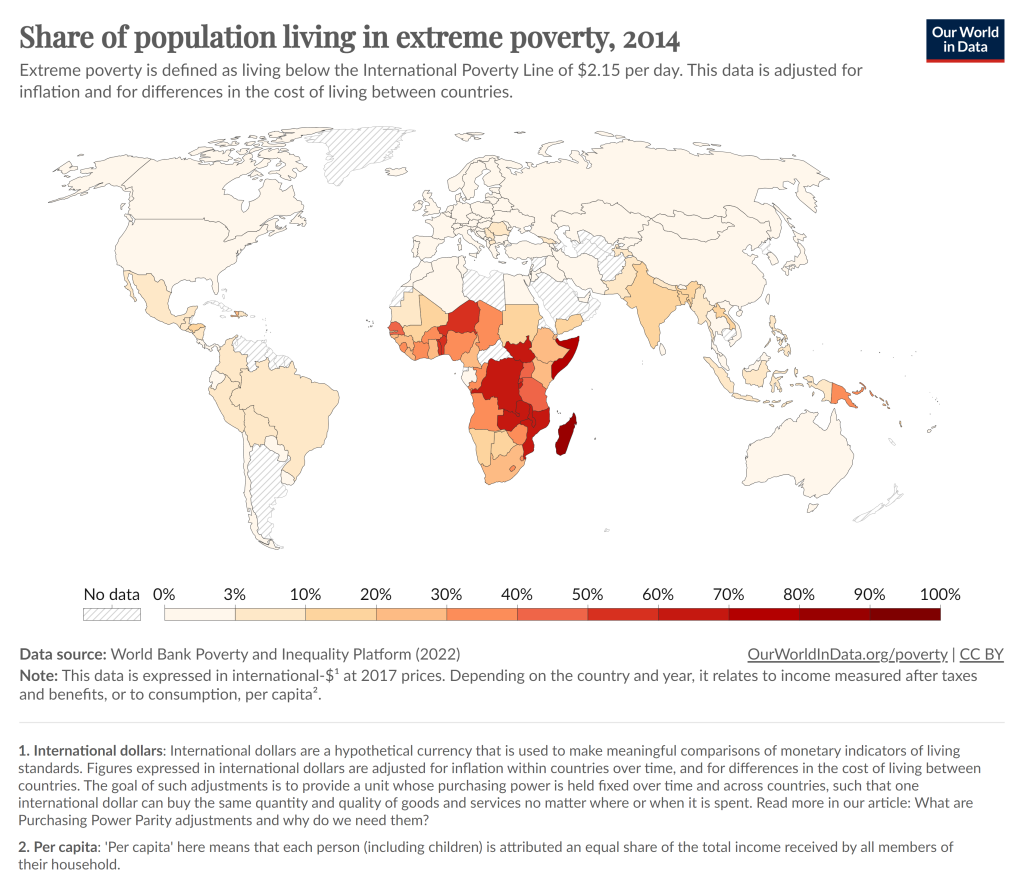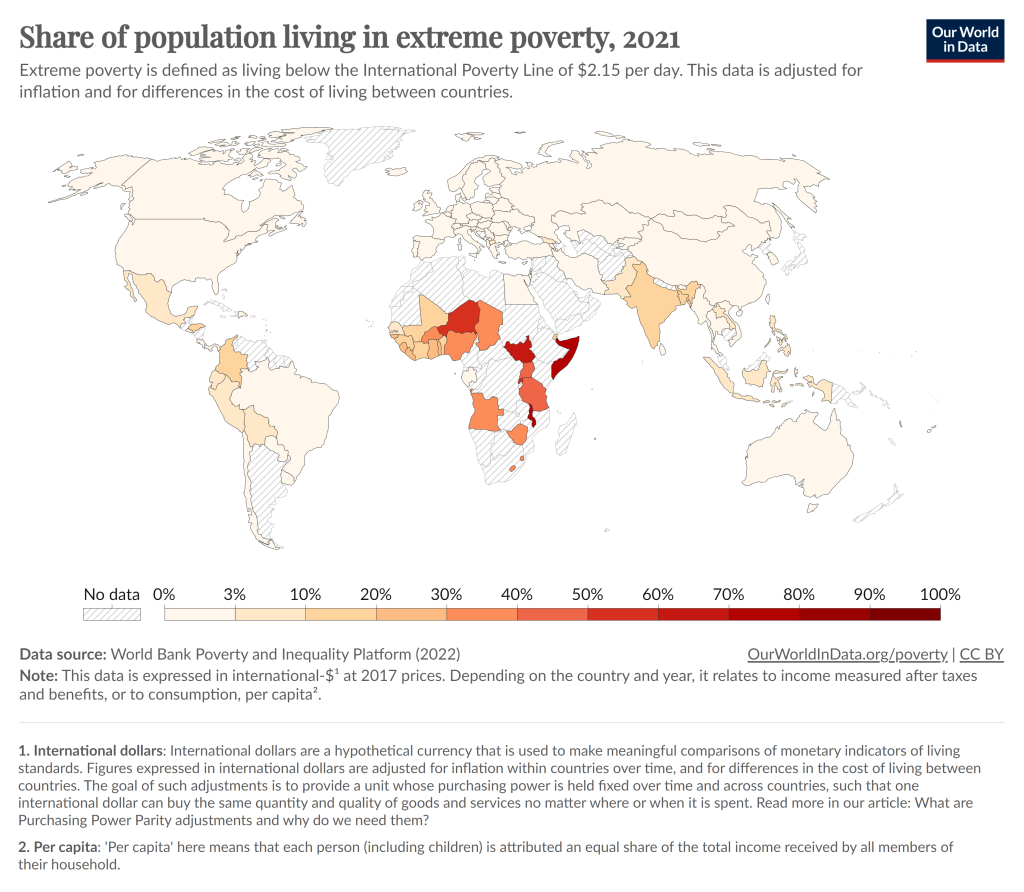The mainstream media is often criticized for sensationalizing news and focusing on negative stories. The negative news has led to a perception among many people that the world is becoming a harsher place to live in. However, it is important to note that this perception is not entirely accurate.
It is true that extreme poverty still exists in the world. Extreme poverty is a critical issue that affects millions of people worldwide The pandemic has pushed millions into extreme poverty, and hundreds of millions will remain in extreme poverty on current trends 2. In 2015, roughly 734 million people or 10% of the global population remained under extreme poverty conditions 3.
But hidden under these negative data points is the data that gives us all hope and positive feelings. In general extreme poverty in the world has been decreasing steadily. Many countries have eliminated extreme poverty, which you can see in the chart presented above.
According to the World Bank, the global poverty rate has been declining steadily over the past few decades 1. In 2015, roughly 734 million people or 10% of the global population remained under extreme poverty conditions . However, some countries have made significant progress in reducing extreme poverty. For instance, Tanzania almost halved its extreme poverty in just over a decade, while China, Kyrgyz Republic, Moldova and Viet Nam effectively ended extreme poverty by 2015 2. The share of the world’s workers living in extreme poverty fell by half over the last decade: from 14.3% in 2010 to 7.1% in 2019 1. While the COVID-19 pandemic has pushed millions into extreme poverty, it is important to note that the overall trend is positive. The fight against global poverty is a long-term challenge that requires a concerted effort from governments, non-governmental organizations, and individuals alike 3.
India has made significant progress in reducing extreme poverty over the past few decades. According to a World Bank Policy Research Working Paper, the extreme poverty count in India fell from 22.5% in 2011 to 10.2% in 2019 12. The decline in rural areas was much higher than in urban areas 1. India’s high economic growth is a key factor in reducing extreme poverty. The growth accelerated in the post-economic reforms period of 1990s. After 1991, per capita income grew nearly two-and-a-half times in real terms compared to the preceding three-and-a-half decades — from 1.8% per year to 4.3% per year 3. India is now among the fastest-growing economies in the world 3. India is also home to the largest number of people who have escaped poverty in recent years, after China, based on a poverty line set at $1.90 per person per day (in 2011 Purchasing Power Parity) 3. The progress made so far is a testament to the fact that with the right policies and strategies, it is possible to eliminate extreme poverty and create a better world for all.
Our team has compiled a set of images that demonstrate the significant progress made in reducing extreme poverty across the world, sub-continent, and Asia. We hope that these images will inspire you and give you a sense of hope for the future. However, it is important to note that there is still much work to be done in the fight against global poverty. We must all work together to eliminate poverty completely and create a better world for all.



Leave a comment